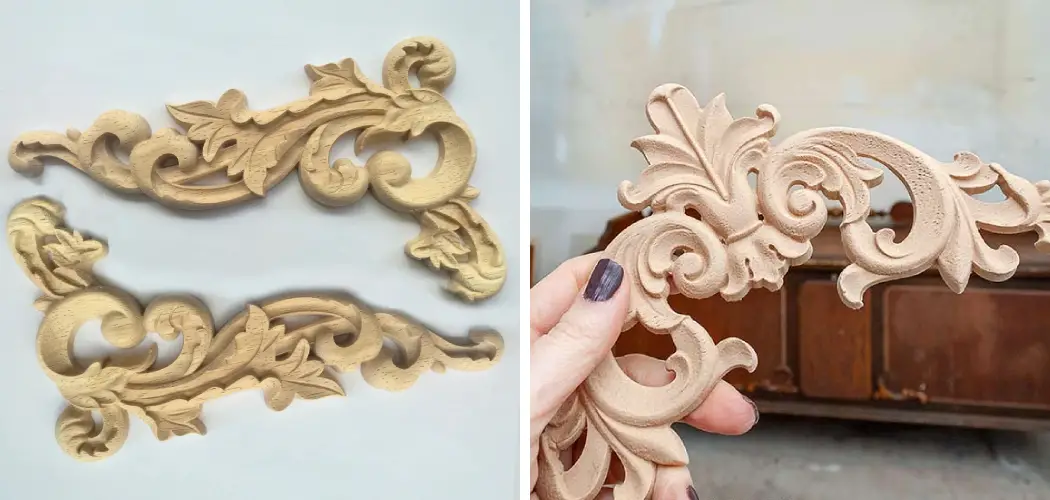Have you ever fallen in love with a piece of furniture–only to find out its way out of your budget? There is a simple solution for this common problem: wood appliques. Wood appliques are decorative panels that can be added to furniture to make it look like you spent a fortune. The best part: they’re easy to remove and replace if you ever decide to change your mind. This post will show you how to remove wood appliques using just a few simple tools. Let’s get started!
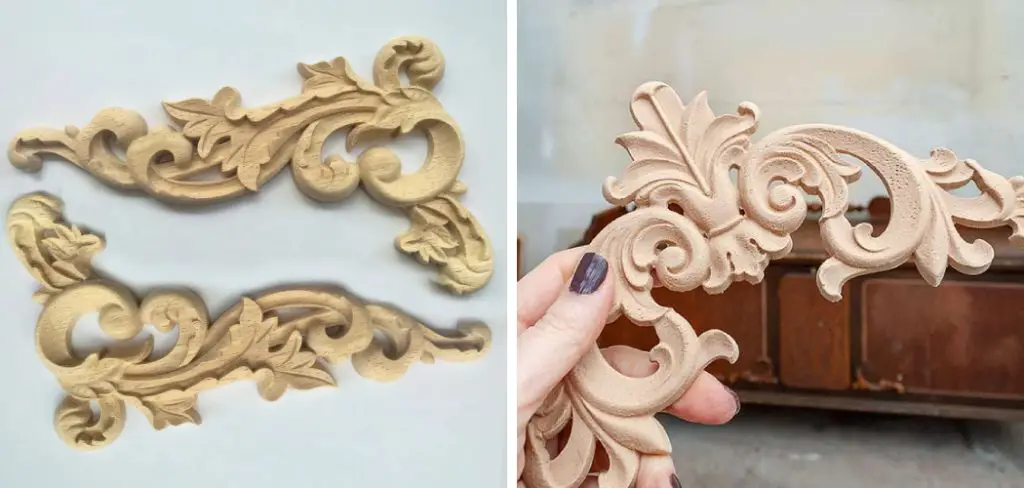
Summary: Don’t be afraid to sand down your wood appliques if they’re starting to fray. You may find that a little bit of sanding will help to remove the old adhesive and restore your piece to its former glory.
What Causes Wood Appliques to Fall Off?
There are a few reasons why wood appliques may fall off of furniture. The most common reason is age. Over time, the adhesive that secures the applique to the furniture can break down, causing the applique to fall off. Another common reason is moisture. If the furniture is exposed to excessive moisture, the adhesive can weaken and cause the applique to fall off.
Additionally, if the furniture is not properly cared for, the applique can become loose and fall off. Another common reason is temperature changes. If the furniture is exposed to extreme temperature changes, the adhesive can become weak and cause the applique to fall off. Lastly, if the furniture is moved around frequently, the appliques can become loose and fall off.
Why Should You Remove Wood Appliques?
There are a few reasons why you may want to remove wood appliques from your furniture. The most common reason is to update the look of the furniture. If you no longer like the look of the appliques, or if you want to change the furniture style, you can remove the appliques and replace them with new ones. Additionally, if the appliques are damaged or broken, you may want to remove them and replace them with new ones.
Another common reason to remove wood appliques is to prepare the furniture for painting. If you want to paint the furniture, you will need to remove the appliques first. Additionally, if you are refinishing the furniture, you will need to remove the appliques before starting the refinishing process. Finally, if you are moving the furniture, you may want to remove the appliques to prevent them from becoming damaged during the move.
Some Simple Ways How to Remove Wood Appliques
1. Use a Putty Knife
If the applique is small, you may be able to remove it using a putty knife. Putty knives are designed to scrape off paint and other materials, so they can also be used to remove small appliques. To use a putty knife, first, heat the blade of the knife using a heat gun or a blow dryer. This will help soften the adhesive holding the applique in place.
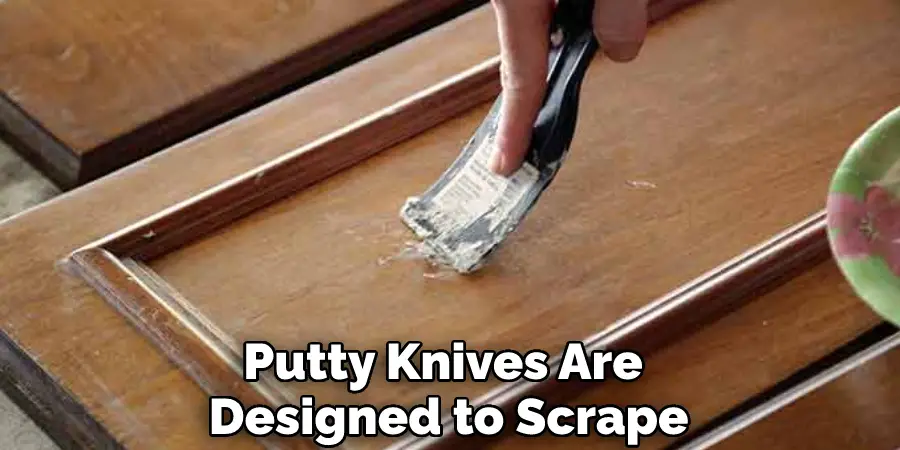
Next, place the blade of the knife under the edge of the applique and gently pry it up. The heat from the blade will help to loosen the adhesive, and the applique should come off easily. If the applique is still stubborn, you can try using a razor blade to remove it.
2. Use a Spatula
If the large applique, you may need to use a spatula to remove it. Spatulas are larger and more durable than putty knives, making them ideal for removing appliques from wood surfaces. To remove an applique with a spatula, first, heat up the applique with a hairdryer. This will make the adhesive softer and easier to remove. Next, use the spatula to pry the applique off of the surface. Start at one corner and work your way around until the entire applique is removed.
3. Use a Paint Scraper
Paint scrapers are another tool that can be used to remove appliques. Paint scrapers are designed to scrape off paint, so they can also be used to scrape off appliques. Just be careful not to damage the surface beneath the applique. First, try using a paint scraper with a blunt edge. If that doesn’t work, you can use a paint scraper with a sharp edge. Just be careful not to damage the surface beneath the applique.
4. Use Dental Floss
If the applique is small and delicate, you may be able to remove it using dental floss. Dental floss is designed to be strong and thin, making it perfect for getting into small spaces. Start by finding the edge of the applique that is closest to the center of the furniture piece. Gently insert the dental floss under the applique and begin to saw back and forth.
The goal is to work the floss under the applique until you can get a good grip on it. Once you have a grip, slowly and carefully pull the applique off of the furniture. If it is difficult to remove, you may need to saw back and forth a few more times to loosen it up.
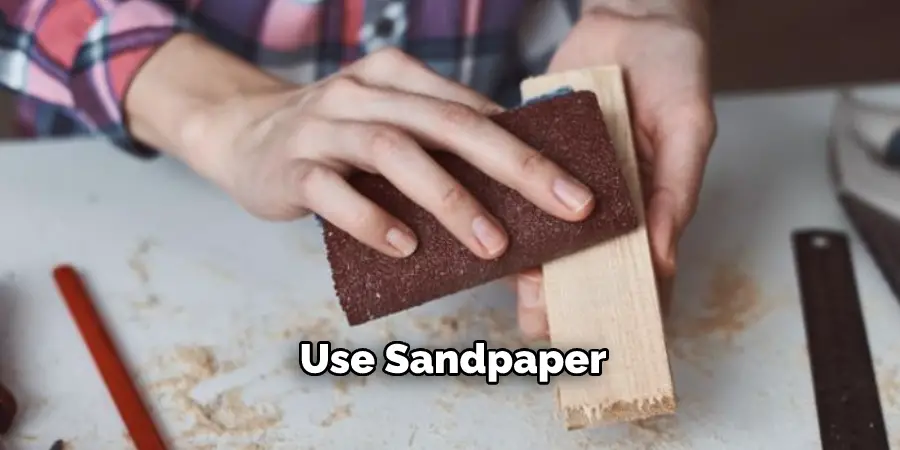
5. Use Sandpaper
If the applique is stubborn, you may need to use sandpaper to remove it. The sandpaper will help to loosen the adhesive holding the applique in place. Start with medium grit sandpaper and move to a finer grit if necessary. Sand in the direction of the grain to avoid damaging the wood. Avoid using too much pressure, as this can also damage the wood.
6. Use a Heat Gun
If the applique is small, you may be able to remove it using a heat gun. Heat guns are designed to emit high heat levels, so be careful not to burn yourself. Apply the heat gun to the applique for a few seconds, then use a putty knife or other sharp object to pry the applique off. You may need to apply heat a few times to loosen the adhesive. If the applique is large, you may need to use a heat gun with a wider nozzle.
7. Use an Iron
If you have an iron, you can use it to remove appliques from wood surfaces. Start by heating up the iron to a medium setting. Then, place a thin towel over the applique and hold the iron on top of it for about 15 seconds. The heat will cause the glue to loosen, and the applique should come right off. If the applique is still stubborn, you can try increasing the heat or holding the iron on longer.
8. Use Boiling Water
If the applique is small, you may be able to remove it using boiling water. Start by boiling a pot of water and then holding the applique over the steam for a few minutes. This will loosen the adhesive and make it easier to remove. Try not to hold the applique in the boiling water for too long, as this can damage it.
9. Use Goo Gone
You can try using Goo Gone if the above methods don’t work. Goo Gone is a product that is designed to remove sticky residues. It is available in most hardware stores. To use Goo Gone, first wet a cloth with the product. Then, apply the cloth to the applique and rub it in a circular motion. After a few minutes, the applique should come off. If it doesn’t, you can try using a putty knife to scrape it off.
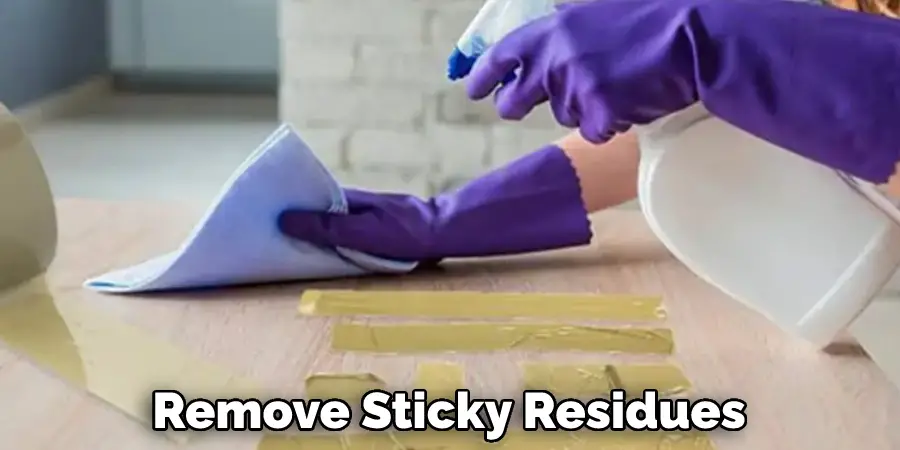
10. Soak the applique in vinegar
If the applique is small, you may be able to remove it by soaking it in vinegar. Vinegar is a weak acid that will slowly eat away at the wood. To remove a small applique with vinegar, soak a cotton ball in vinegar and apply it to the applique. Let it sit for a few minutes, then try to scrape the applique off with a putty knife. If the applique is large, you will need to soak it in a vinegar bath. To do this, fill a bowl with vinegar and place the applique in it. Let it soak for a few hours, then try to scrape it off with a putty knife.
You Can Check It Out To Remove Caster Socket
Tips and Warnings on How to Remove Wood Appliques
Tips:
- Be careful not to damage the wood when removing the applique.
- If the applique is stubborn, you may need to use sandpaper to remove it.
Warnings:
- Do not use too much force when removing the applique, as this can damage the wood.
- Be careful not to sand too deeply, as this can also damage the wood.
- Do not use chemicals to remove the applique, as this can damage the wood.
- Do not use heat to remove the applique, as this can damage the wood.
- If you are unsure of how to remove the applique, please seek professional help.
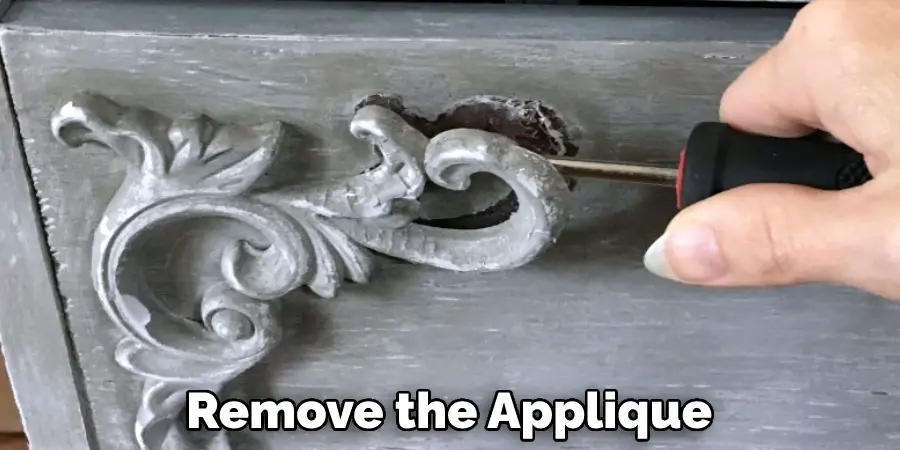
Can You Bend Wood Appliques?
Wood appliques are decorative wooden ornaments that can be added to furniture, cabinetry, or other wooden items to enhance their look. Bending wood appliques can be challenging due to their size, shape, and type of wood used.
To bend wood appliques, the wood needs to be heated to a specific temperature, and then it can be bent into the desired shape. Steam bending is one method of bending wood appliques. In this process, the wood is heated in a steam box until it becomes pliable, and then it is shaped over a wooden form.
Lamination is another method where thin layers of wood are glued together and then shaped into the desired form. Bending wood appliques requires skill, patience, and proper safety precautions, however, the end result can be a beautiful decorative ornament that adds character and charm to any wooden item.
Can You Use Glue for the Applique?
Yes, it is possible to use glue for applique. In fact, using glue for applique can be easier than traditional needle and thread applique for those who are not comfortable with sewing. The glue used for applique is fabric glue, and it’s available in most craft stores. To use the glue for the applique, the first step is to cut the fabric shape needed for the applique.
Then, apply a few drops of the fabric glue on the back of the shape and then press it onto the base fabric. Allow the glue to dry completely before continuing with the project. While glue for fabric applique can be a quick and easy method, it may not be permanent and may not hold up as well as sewn applique over time.
Conclusion
So there you have it! These are some tips on how to remove wood appliques. With a little patience and the right tools, you should be able to remove the applique without damaging the wood. If you have any questions or comments, please feel free to leave them below. Thanks for reading!

